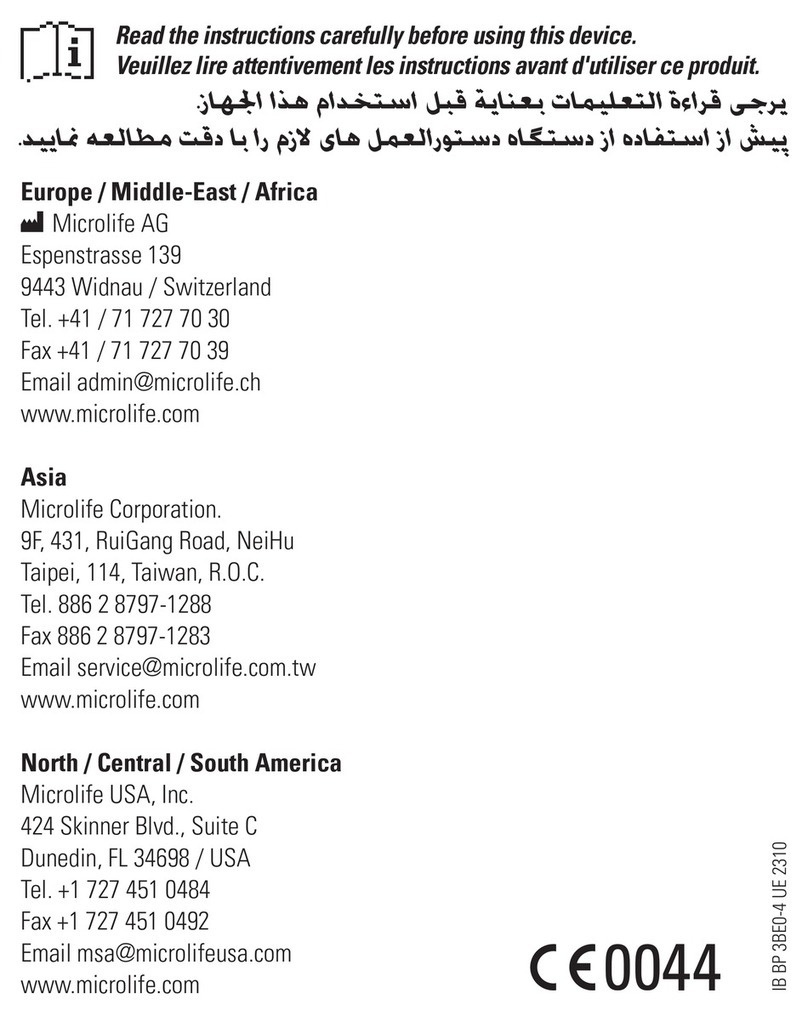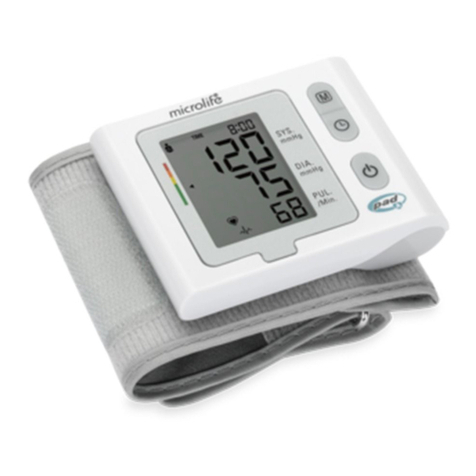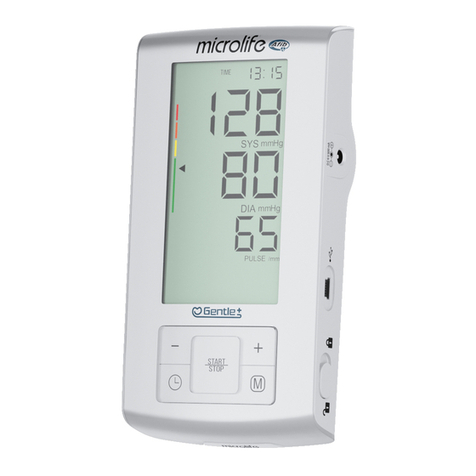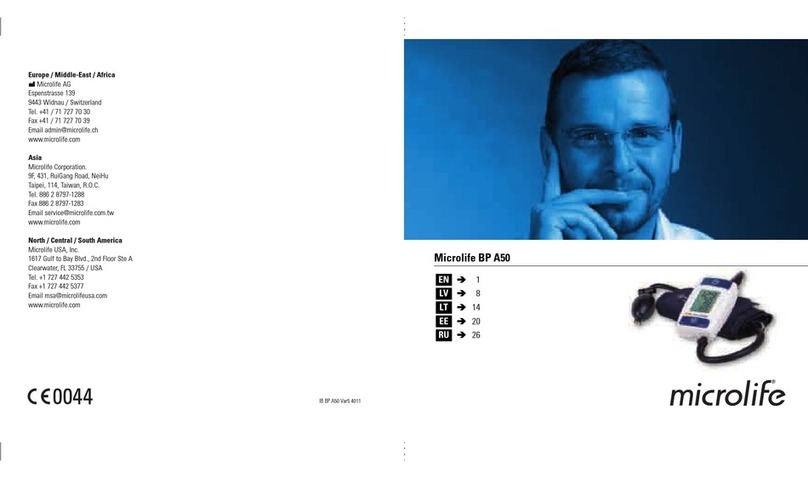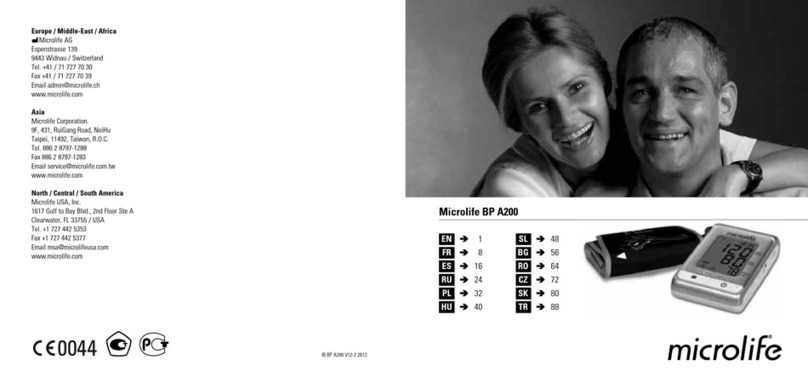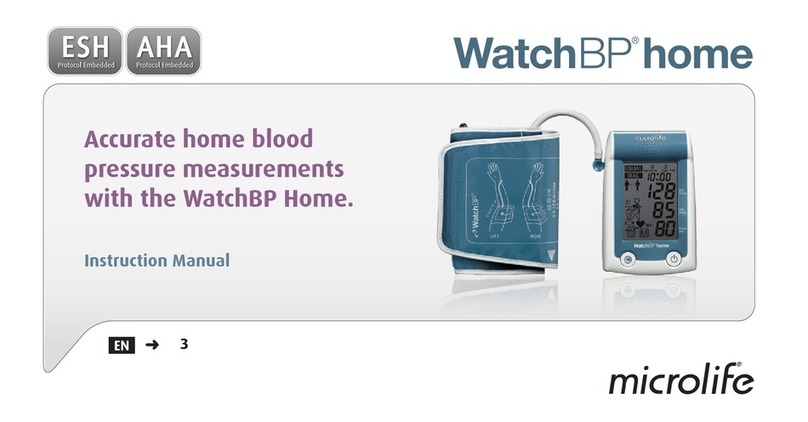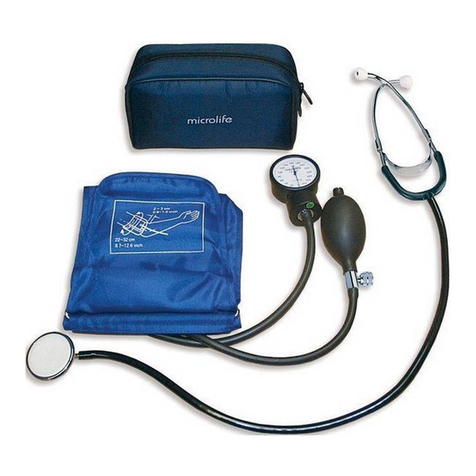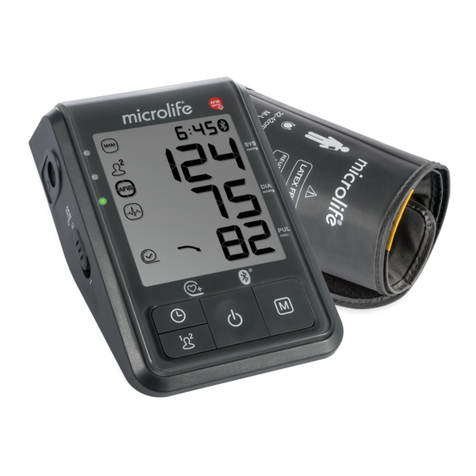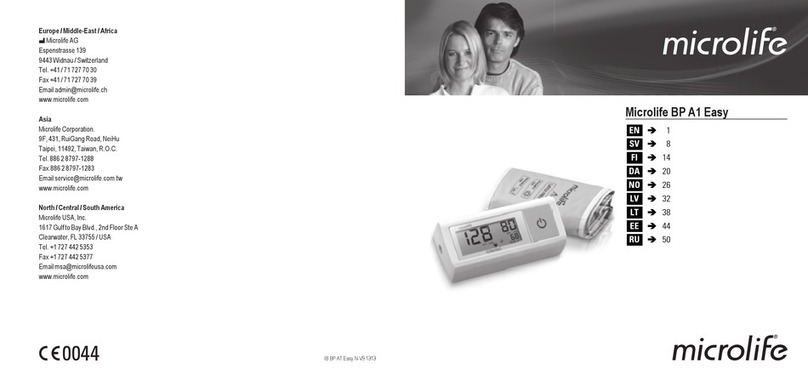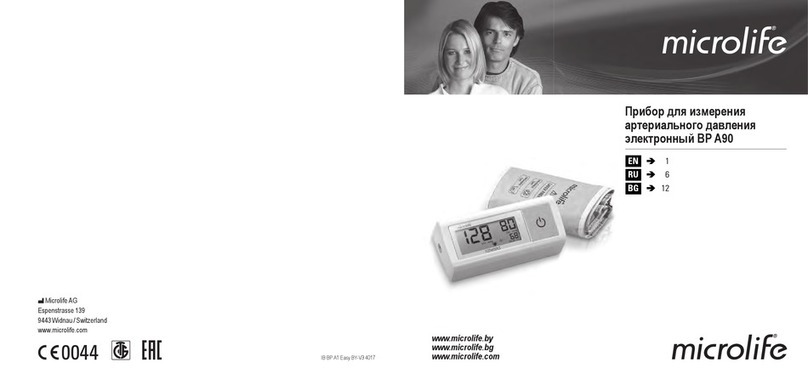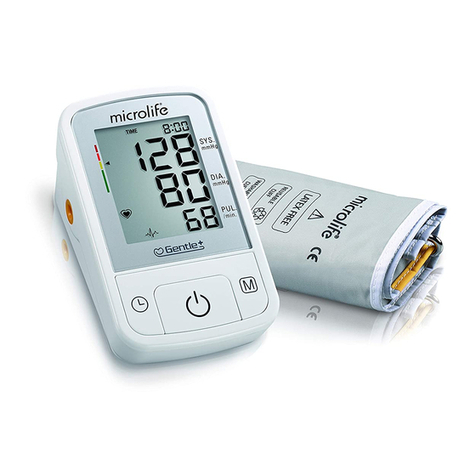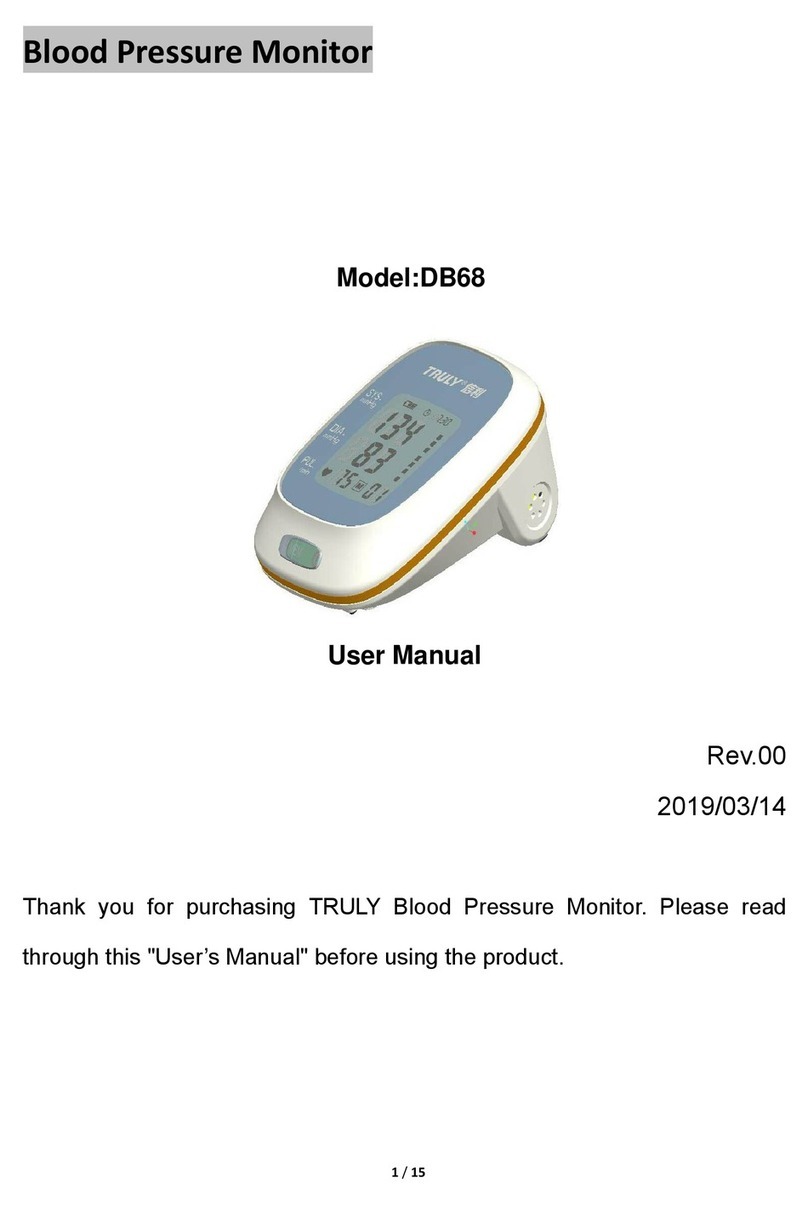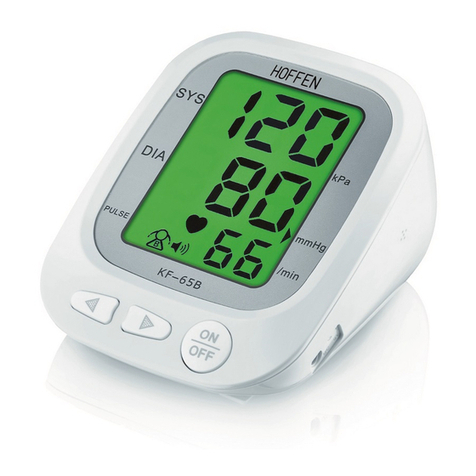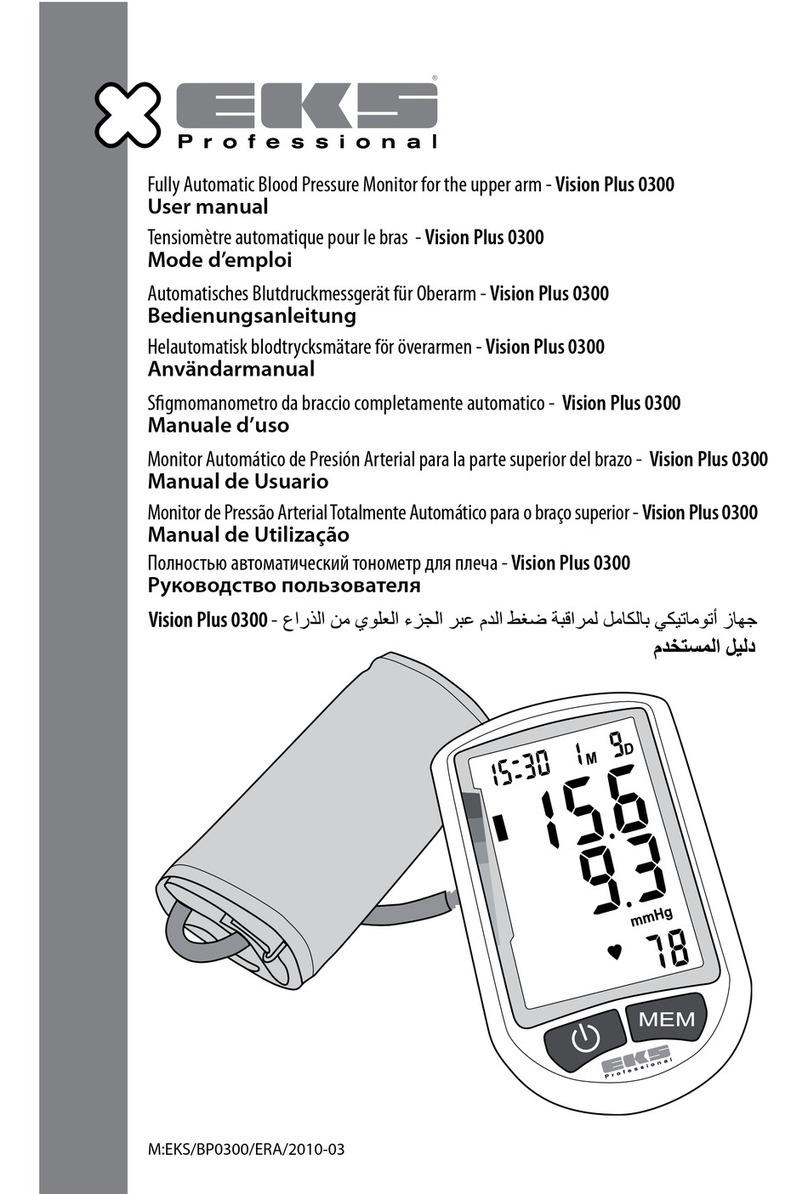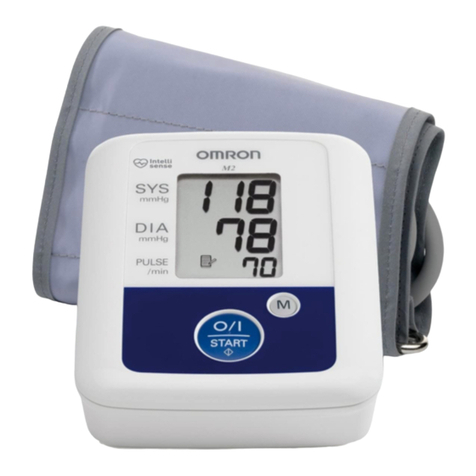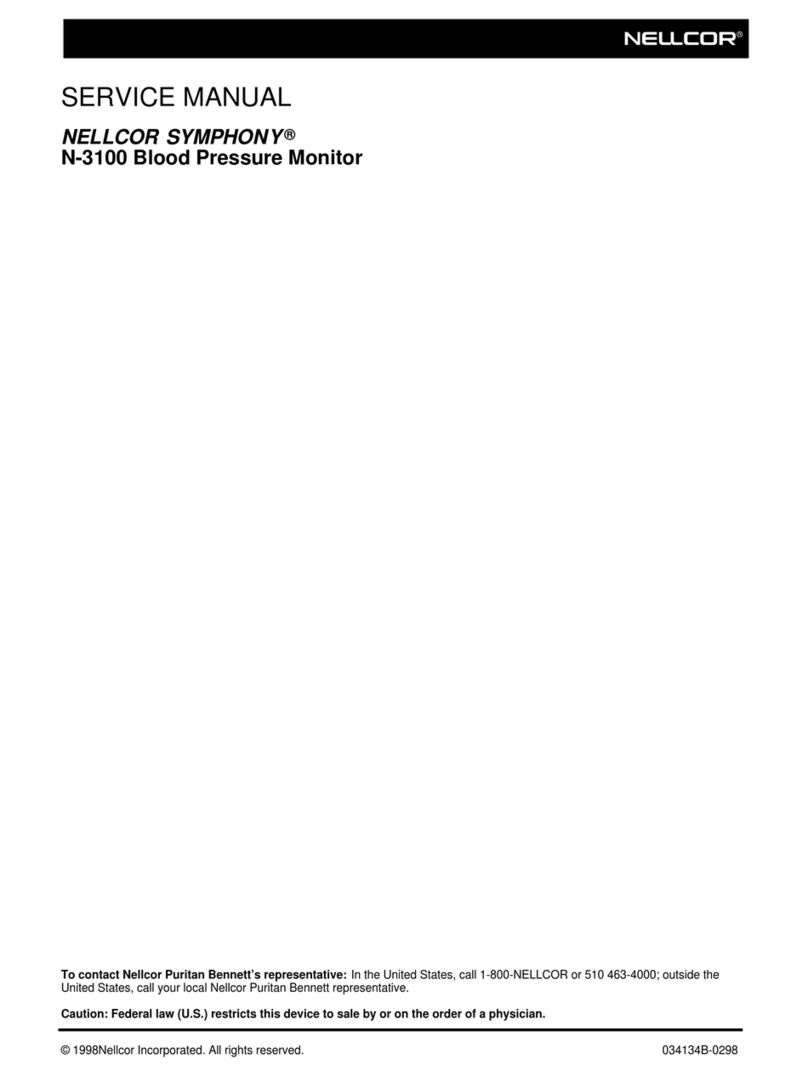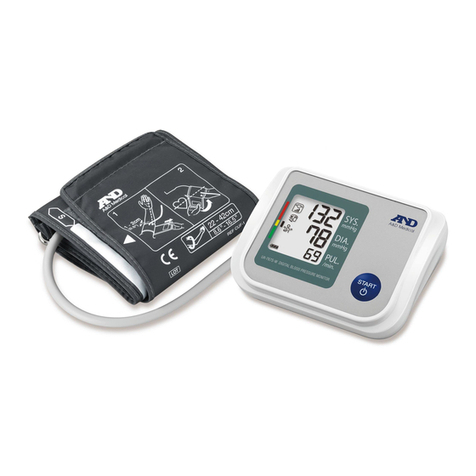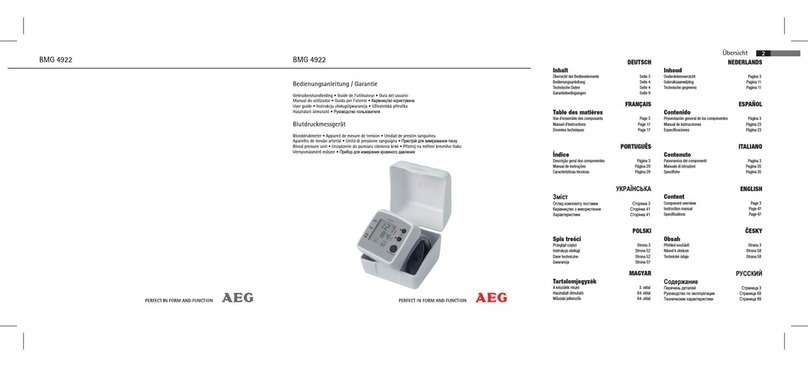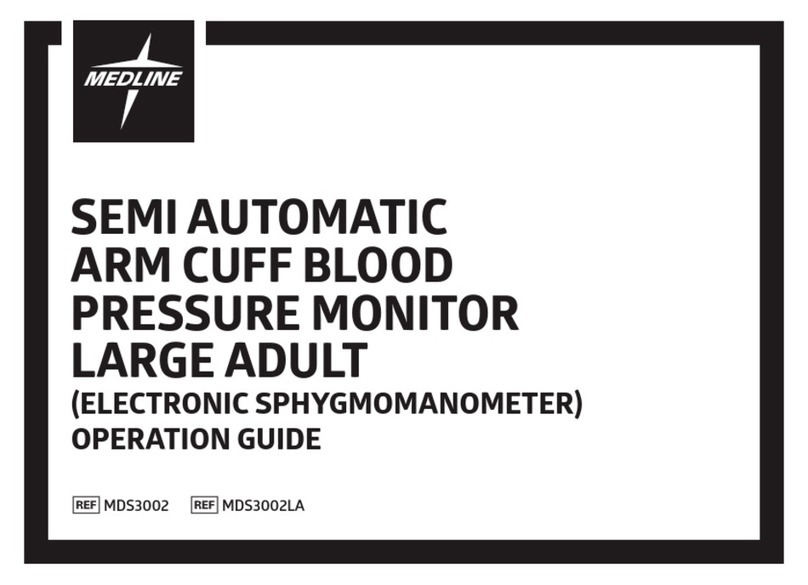
5BP A150 AFIB EN
button pressed until the pressure is about 40 mmHg above
the expected systolic value – then release the button.
5. Appearance of the Atrial Fibrillation Indicator for
early Detection (Active only in AFIB/MAM mode)
This device is able to detect atrial fibrillation (AF). This symbol BT
indicates that atrial fibrillation was detected during the measure-
ment. Please refer to the next paragraph for information regarding
the consultation with your doctor.
Keep the arm still during measuring to avoid false readings.
This device may not or wrongly detect atrial fibrillation in
people with pacemakers or defibrillators.
6. Traffic Light Indicator in the Display
The bars on the left-hand edge of the display BM show you the
range within which the indicated blood pressure value lies.
Depending on the height of the bar, the readout value is either
within the optimum (green), elevated (yellow), too high (orange) or
dangerously high (red) range. The classification corresponds to
the 4 ranges in the table as defined by the international guidelines
(ESH, AHA, JSH), as described in «Section 1.».
7. Data Memory
This device automatically stores the last 30 measurement values.
Viewing the stored values
Press the M-button 2briefly, when the device is switched off. The
display first shows «M» AR and then a value, e.g. «M 17». This
means that there are 17 values in the memory. The device then
switches to the last stored result.
Pressing the M-button again displays the previous value. Pressing
the M-button repeatedly enables you to move from one stored
value to another.
Memory full
Pay attention that the maximum memory capacity of 30
memories is not exceeded.
When the 30 memory is full, the
oldest value is automatically overwritten with the 31st
value.
Values should be evaluated by a doctor before the
memory capacity is reached – otherwise data will be lost.
Clearing all values
If you are sure that you want to permanently remove all stored
values, hold down the M-button (the device must have been
switched off beforehand) until «CL» appears and then release the
button. To permanently clear the memory, press the M-button
while «CL» is flashing. Individual values cannot be cleared.
8. Battery Indicator and Battery change
Low battery
When the batteries are approximately ¾ empty the battery symbol
AQ
will flash as soon as the device is switched on (partly filled battery
displayed). Although the device will continue to measure reliably, you
should obtain replacement batteries.
Flat battery – replacement
When the batteries are flat, the battery symbol AQ will flash as soon
as the device is switched on (flat battery displayed). You cannot
take any further measurements and must replace the batteries.
1. Open the battery compartment 9at the back of the device.
2. Replace the batteries – ensure correct polarity as shown by the
symbols in the compartment.
3. To set date and time, follow the procedure described in
«Section 3.».
The memory retains all values although date and time must
be reset – the year number therefore flashes automatically
after the batteries are replaced.
Which batteries and which procedure?
Use 4 new, long-life 1.5 V, size AA alkaline batteries.
Do not use batteries beyond their date of expiry.
Remove batteries if the device is not going to be used for a
prolonged period.
Information for the doctor on frequent appearance of the
atrial fibrillation indicator
This device is an oscillometric blood pressure monitor that also
analyses pulse irregularity during measurement. The device is
clinically tested.
The AFIB symbol is displayed after the measurement, if atrial
fibrillation occurred during measuring. If the AFIB symbol
appears after having performed a full blood pressure measure-
ment episode (triplicate measurements),the patientis advised to
perform another measurement episode (triplicate measure-
ments). If the AFIB symbol appears again, we recommend the
patient to seek medical advice.
If the AFIB-symbol appears on the screen of the blood pressure
monitor, it indicates the possible presence of atrial fibrillation.
The atrial fibrillation diagnosis however, must be made by a
cardiologist based on ECG interpretation.


